Aerosolar adventure in Ansenuza
By Maxi Laina & Joaquín Ezcurra
We find that we had virtually forgotten the note of each bird, and when we hear it again, it is remembered like a dream, reminding us of a previous state of existence...
Henry David Thoureau
Imágenes aéreas por Luciano Villada
On Ansenuza Sea
Ansenuza is one of the largest salt lakes in the world. Its extension is a little smaller, but still comparable to the upper Río de la Plata.
Home to almost one million avifauna from all the Americas, birds arrive from all over the continent, from the Canadian Arctic, the Rocky Mountain states, the prairies of the United States, and much of South America, such as Patagonia and the High Andes. For these birds, Ansenuza is at the end of a long and dangerous flight, since this is their home, a home under the sun.

Mar de Ansenuza superpuesto con el Río de la Plata superior
Marshlands merge into endless salt flats dotted with small lakes. Beyond, the delta and then the vastness of the open waters of the Ansenuza Sea, salty and shallow, full of insects and crustaceans. An ideal refuge for Austral flamingos. The wealth of food available in this area attracts a multitude of birds from around the world. Migratory shorebirds, winged nomads on an epic trip.
Why Ansenuza?
The Ansenuza Sea and the marshes of the Dulce River, already designated as an area of international importance for birds, are about to become the largest and most innovative National Park in Argentina: the Ansenuza National Park.

Aerocene echoes the global attention with respect to climate emergency, and the community proposed to develop some specific actions in Ansenuza. The focus of these actions was on the study and observation of birds, the inter-species dialogue and the strengthening of the Ansenuza environment as a continental sanctuary for migration birds. The emphasis was on the sustainability of the actions, according to the Aerocene spirit: free from borders, free from fossil fuels.

Travel Log
Friday, October 18, 2019
3pm> Travelled from Morteros to La Para. We visited the municipal recycling center in La Para, a town where neighbors have been separating waste for over 30 years. Then sustainable houses are built with recycled materials, setting an example of environmental responsibility.
4pm> We took an 11 km trip by land to reach a beach with an open view of the Ansenuza Sea. The water reaches beyond the horizon. Dry branches stand in shallow waters near the beach, a spider web floats in the air suspended between these branches over salt water.
5pm> We arrive at Ansenuza Bay campsite, assemble camp and walk along the coast. Before sunset, you can see dozens of Austral flamingos feeding on the coast.
Saturday, October 19, 2019 > BIG DAY!
6am> We woke up super early to fly the balloons with the light of dawn.
6.30am> We inflated two balloons running on the shore of the lake, a gigantic swampy beach. Ignacio measured the wind speed, which was stable at 6km / h.

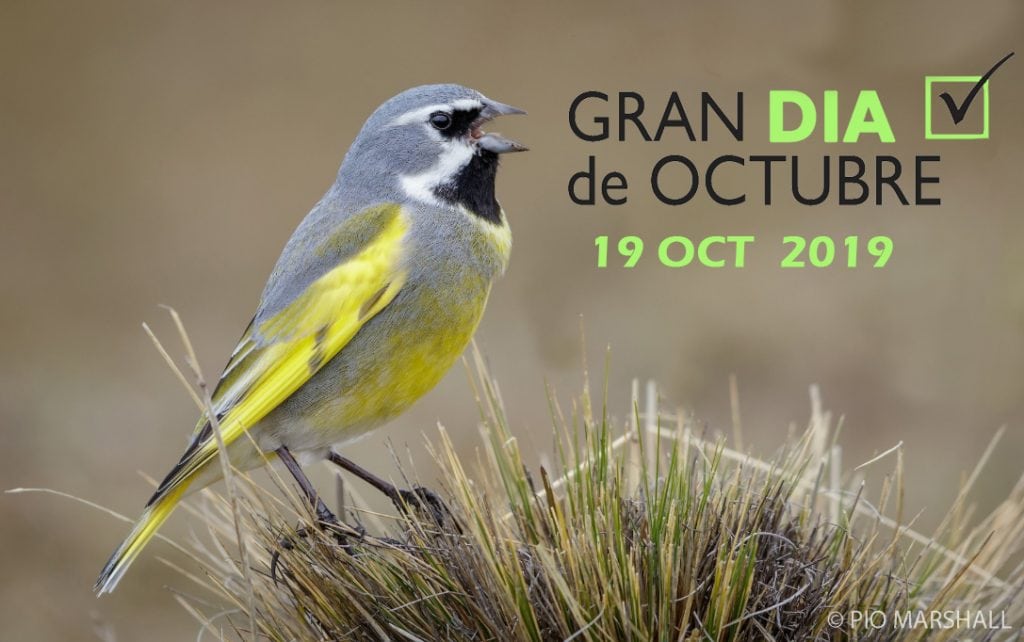
7am> We walked along the coast trying to get as close as possible to a group of Austral flamingos. During the journey, as we buried our feet in the mud, the balloons got wet with salt water, which slightly colored them white. Finally, we decided that this part of the adventure should end, to return to the base and dry the Aerocene balloons.
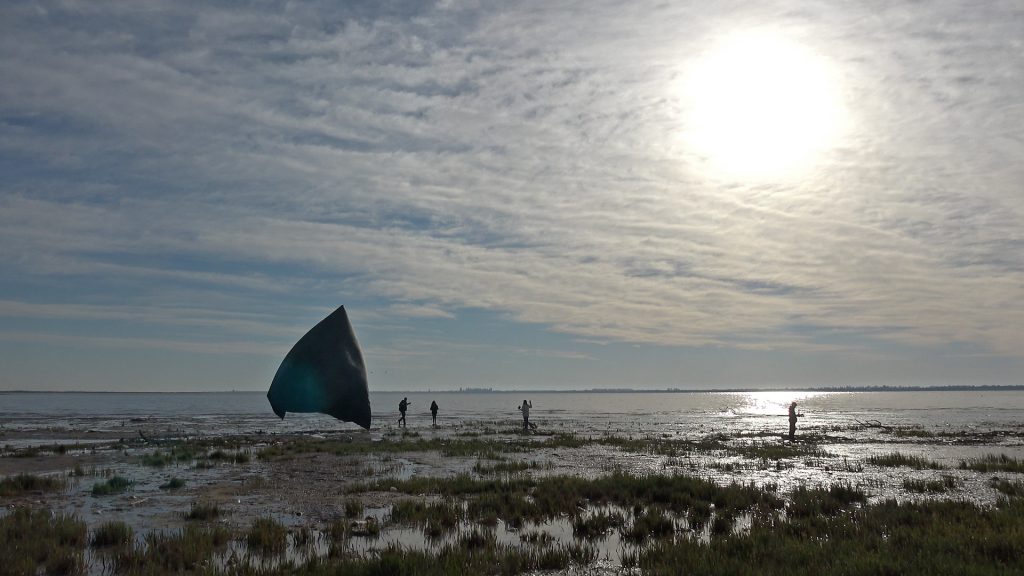

7.30am> The balloons are dry and in optimal conditions to fly. A slight breeze from the west drove them away from the coast, but upon encountering a ravine, it generated a dynamic current that helped them gain height.
9 am> Flights continue. Birdwatchers begin to arrive from different places in the region. From the road, as they approach the Bay, two huge balloons can be seen flying. The wind increases its speed to 9km / h. In a short time, the speed will pass our limit of operations for flights of 10km / h. After enjoying a high-altitude aerosolar flight, free from fossil fuels, it is time to land the balloons.
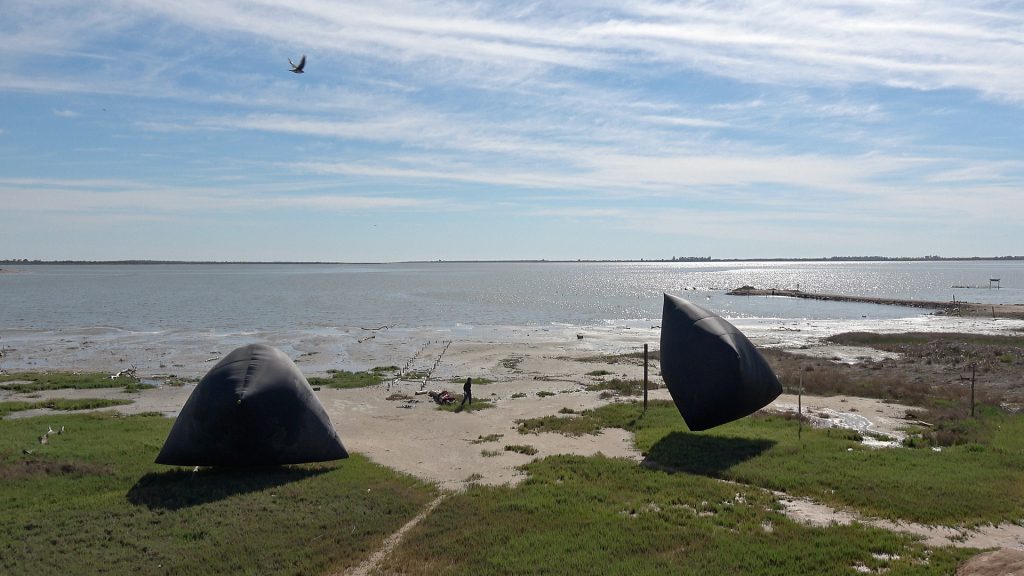
10am> The light breeze transforms into a 16km / h wind. Meanwhile, a part of the Aerocene team meets the ornithologists of Aves Argentinas and share an observation and bird count walk. A team member, Olivia Laina, uses the eBird application to record her walk and sends the data of the birds observed through the application.
11am> Local television channel of La Para town approaches and interviews Mirko Laina, who tell them about the activity carried out during the day.
Noon> The bird watchers finish their walk and Juanca Mendoza from Aves Argetninas invites us to give a brief talk about the Aerocene project. Finally, observations of individually registered birds are uploaded through the eBird application. All these georeferenced data will end up in the servers of Cornell University Ornithology Lab.
Aerocene Ansenuza Team
Luz Laina
Ignacio Agustín Flores
Emiliano Flores
Maxi Laina
Olivia Laina
Mirko Laina
Joaquin Ezcurra

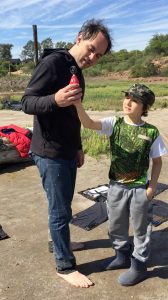
Acknowledgements
Thanks to all those who joined with true collaborative spirit and helped to make this event happen. A special thanks to Luz Laina, for her unconditional support, to Valeria Goycochea, for helping us move around the region, to Juanca from Aves Argentinas for his great help and passion for birds, and to Marcelo Ramello, from the Municipality of La Para for supporting these actions.
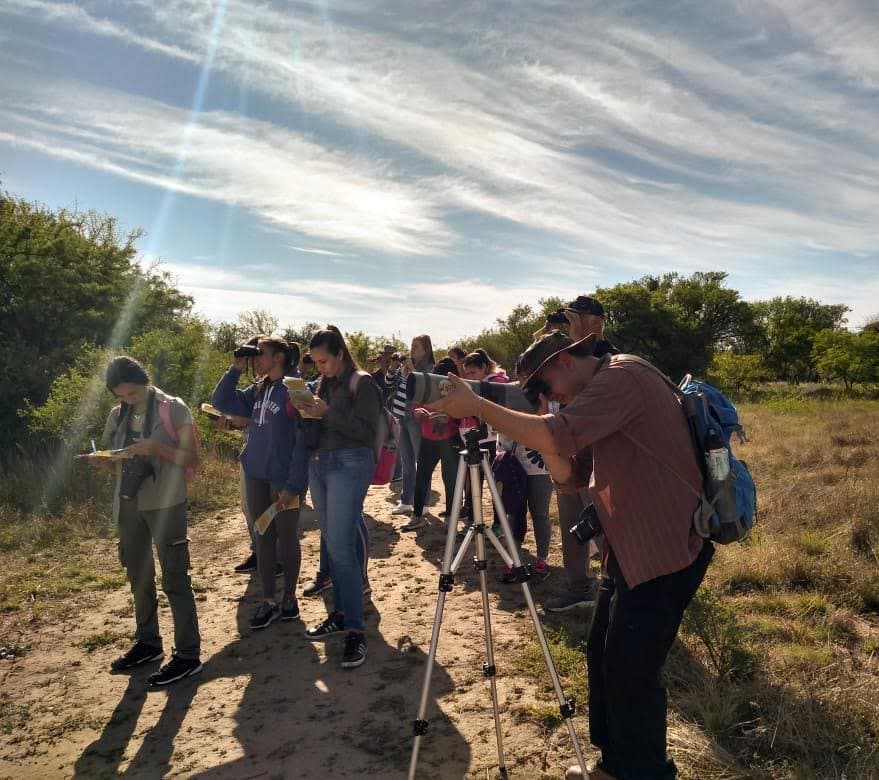
Luz Laina – FM Max 93.1, Morteros
Valeria Goyochea – Mobility
Juanca Mendoza – Aves Argentinas
Marcelo Ramello – Municipality of La Para, Area of Culture, Communication and Tourism
Paola Garraza – Córdoba Tourism Agency
Luciano Villada – Drone Pilot
Jorge Álvarez – Córdoba Audiovisual Pole
